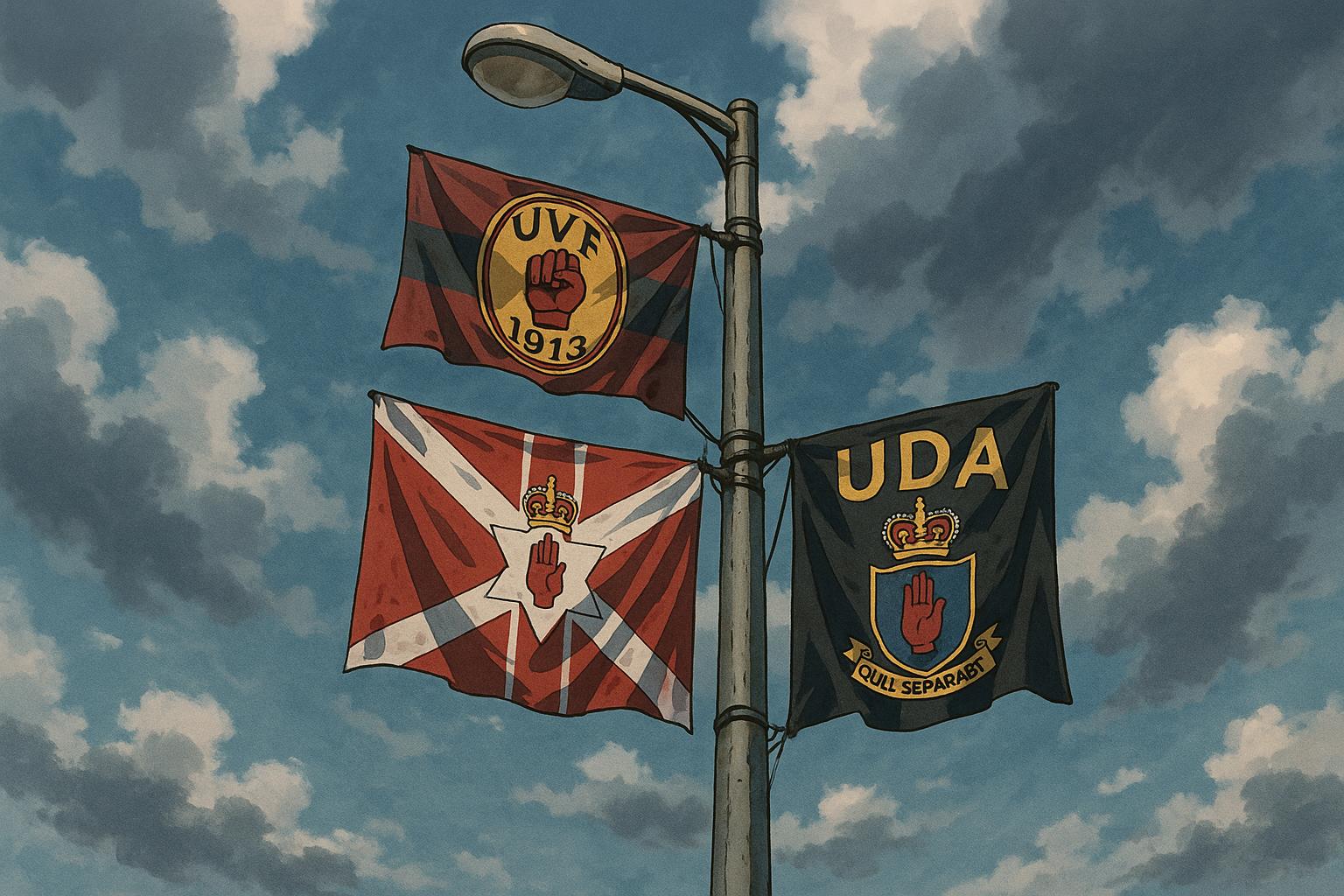In the lead-up to the summer marching season, tensions surrounding the presence of paramilitary flags in Northern Ireland have resurfaced, drawing criticism from various political figures. East Belfast councillor Brian Smyth has highlighted a perceived hypocrisy among those who denounce the music collective Kneecap while simultaneously justifying the display of paramilitary flags. He remarked that it is inconsistent for individuals to criticise a member of Kneecap, who was recently charged with a terror offence for waving a Hezbollah flag, while paramilitary flags are allowed to adorn lampposts across the region. He emphasised that under UK law, such organisations are deemed illegal and terrorism-related.
This issue is pressing, particularly with the recent proliferation of flags from groups such as the Ulster Volunteer Force (UVF) and the Ulster Defence Association (UDA) during this time of year. Smyth contends that the indifference shown by governmental bodies—such as the Department for Infrastructure and the Police Service of Northern Ireland (PSNI)—is reflective of a broader failure in governance. He lamented, “We live in 2025, and flags of illegal organisations… are allowed to mark territory and trample over people who live in fear.” The frustration felt by many within the community is palpable, as residents continue to express their discontent over the display of these flags, which many perceive as symbols of intimidation rather than cultural celebration.
Belfast's Lord Mayor, Micky Murray, echoed these sentiments, describing the flags as “littering” the areas of the north. He noted that while there are legitimate cultural celebrations, such as those around VE Day or the 12th of July, the hanging of paramilitary flags serves a different purpose. Murray's Alliance Party is currently advocating for new legislation that would create a regulatory framework governing the display of emblems on public structures; a move seen as essential to bringing some order to the increasingly chaotic landscape of political symbols in the region.
The public outcry against these displays has been compounded by recent events, including visible displays of loyalist flags outside commercial establishments, which some residents claim create a “chill factor” for shoppers. SDLP councillor Donal Lyons has pointed out the urgent need for political action, stressing that the current approach, characterised by passing responsibility between authorities, has proven ineffective. He insists on the necessity of a coherent political framework to deal with the turmoil caused by these flags.
Within the wider context of community relations, the recent emergence of flags and graffiti associated with sectarian groups in areas like Fermanagh has exacerbated fears of increased tensions. Sinn Féin Councillor Dermot Browne has called for the immediate removal of such flags, emphasising the importance of fostering good community relations amid growing concerns.
The presence of paramilitary flags not only reflects unresolved tensions from Northern Ireland's turbulent past but also raises questions about the responsibilities of local governance. The PSNI’s stance has been somewhat ambiguous, indicating that it will address such displays on a case-by-case basis and engage with community representatives where necessary. However, critics argue that more decisive action is needed to dismantle the culture of intimidation associated with these displays of allegiance to paramilitary organisations.
As Northern Ireland grapples with its complex history and the implications of such symbols in public spaces, the call for clearer guidelines and a definitive stance on the display of paramilitary flags remains a focal point of political discourse. The situation evokes a sense of urgency for all parties involved, highlighting the challenges of navigating the legacy of sectarian divisions while striving for a more harmonious society.
Reference Map:
- Paragraph 1 – [1], [2]
- Paragraph 2 – [1], [3], [7]
- Paragraph 3 – [1], [4], [6]
- Paragraph 4 – [2], [7]
- Paragraph 5 – [3], [5]
- Paragraph 6 – [1], [7]
Source: Noah Wire Services
